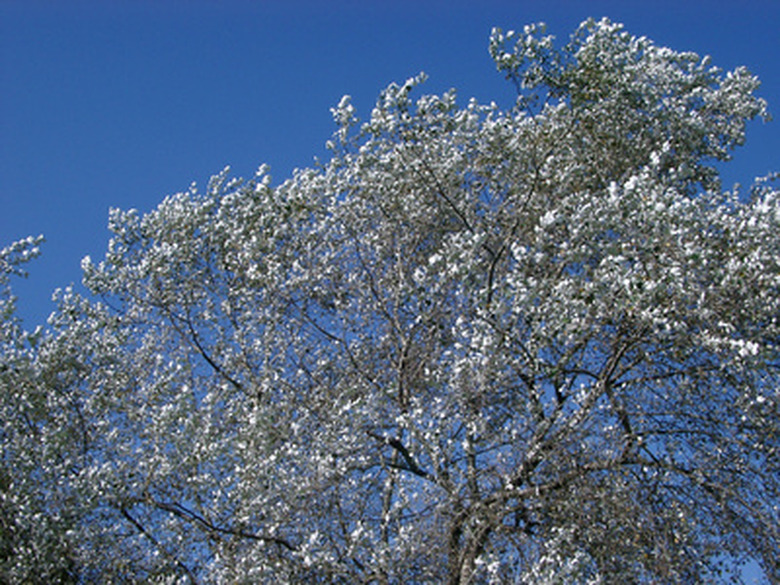How To Care For A Silver Birch Tree
Things Needed
- Soil test
- Rake
- Aluminum sulfate
- Compost
- Pine needle mulch
- Azalea fertilizer
Silver birch is a large tree reaching an average of 50 to 75 feet high with a spread of 15 to 25 feet. The tree is known for its unusual bark and green leaves that seem to glitter in the sunshine. Silver birch is sometimes called yellow birch or gray birch. These trees require a lot of care and normally have a short life span of only 20 years, although they can live up to 50 years in ideal conditions. The silver birch prefers cooler weather and is hardy in USDA planting zones 3 through 6.
Step 1
Obtain a soil test kit from the local garden center or contact the county extension center for one. Silver birch trees do best in soil with a pH of 5.5. If the soil test reveals a higher pH level, measures should be taken to lower it.
- Silver birch is a large tree reaching an average of 50 to 75 feet high with a spread of 15 to 25 feet.
- These trees require a lot of care and normally have a short life span of only 20 years, although they can live up to 50 years in ideal conditions.
Step 2
Dampen the soil and rake to aerate if the soil test shows a need to lower the pH. Spread the aluminum sulfate on warm, damp soil and rake again to mix it in with the soil. Rake shallowly so as not to damage any surface roots around the tree. Refer to the soil test for the amount to apply.
Step 3
Water the tree to keep the soil moist. In cooler weather, the soil will retain the water for longer periods, but in hot summers the tree may have to be watered every day. Silver birch has shallow roots, so the area above them must be kept moist.
- Dampen the soil and rake to aerate if the soil test shows a need to lower the pH.
- Spread the aluminum sulfate on warm, damp soil and rake again to mix it in with the soil.
- In cooler weather, the soil will retain the water for longer periods, but in hot summers the tree may have to be watered every day.
Step 4
Place a layer of compost over the soil under the spread of the tree. This will help to retain the moisture and keep weeds from growing and competing with the tree for water and nutrients.
Step 5
Spread a three-inch layer of pine needles around the tree. This will provide water retention and will help to lower the soil pH. Aluminum sulfate will work when it is applied, but a constant breakdown of the acid in the pine needles will keep the level lower.
Step 6
Fertilize each spring with an azalea fertilizer or fertilizer for some other acid loving plant. This will also help with the soil pH. Follow the manufacturer's directions on the amount to use.
- Place a layer of compost over the soil under the spread of the tree.
- This will provide water retention and will help to lower the soil pH.
- Aluminum sulfate will work when it is applied, but a constant breakdown of the acid in the pine needles will keep the level lower.
